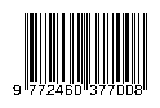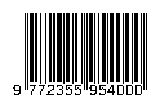Penggunaan Media Sosial Facebook, Twitter Dan Youtube Untuk Membangun Consumer Brand Relationship Oleh Merek-Merek Di Indonesia
Abstract
Keywords
Full Text:
PDF (Bahasa Indonesia)References
Bagozzi & Dholakia, U.M. (2006). Antecedents And Purchase Consequences Of Customer Participation In Small Group Brand Communities. International Journal Of Research In Marketing, 23, 1, 45–61
Belleghem, V., Steven., Eenhuizen,M., & Veris, E. (2011). Social Media Around The World 2011. Http://Www.Slideshare.Net/Stevenvanbelleghem/Social-Media-Aroundthe-World 2011 /Download ?Le ad=394fd930572c9b62fb 082021af5a6d0922046ec4. Insites Consulting. Diakses Pada 18 November 2013
Blackston, M. (1992). A Brand With An Attitude: A Suitable Case For Treatment. Journal Of Marketing Research. 34(3):231–41.
Blackston, M. (1993). Beyond Brand Personality: Building Brand Equity. In: Aaker D, Editor.Brand Equity And Advertising. Lawrence Erlabaum Associates; 1993. P. 113–24.
Bolfing, C.P. (1989). How Do Consumer Express Dissatisfaction and What Can Service Marketeers Do About It. Journal Of Service Marketing. Vol3 No 2
Bouhlel, O., Mzoughi, N., Hadiji, D. & Slimane, I.B. (2011). Brand Personality’s Influence On The Purchase Intention: A Mobile Marketing Case. International Journal Of Business And Management. Vol. 6, No. 9.
Burton, D. (2002). Consumer Education and Service Quality: Conceptual Issues and Practical Implications. Journal Of Services Marketing. Vol 16 pg 125
Casalo, L., Flavian, C. & Guinaliu, M. (2007). The Impact of Participation In Virtual Brand Communities On Consumer Trust and Loyalty. Journal of Online Information Review. Vol 31 No.6
Coyle, J.R. & Thorson, E. (2001).The Effects Of Progressive Levels Of Interactivity And Vividness In Web Marketing Sites. Journal Of Advertising, 30, 3, 65–77
Dholakia, U.M. & Durham, E. (2010). One Cafe Chain's Facebook Experiment. Harvard Business Review. 88, 3, 26.
Edigitalresearch. (2013). Study Finds Social Media Is Fastest And Most Reliable Customer Contact Channel. Http://Www.Edigitalresearch.Com/News /Item/Nid/273057435. Diakses Pada 28 Desember 2013
Eriyanto. (2011). Analisis Isi: Pengantar Metodologi Untuk Penelitian Ilmu Komunikasi Dan Ilmu Ilmu Sosial Lainnya. Prenada Media Group: Jakarta
Evans, J.R. & Laskin, R.L. (1994). The Relationship Marketing Process: A Conceptualization And Application. Journal Of Industrial Marketing Management. Vol 23. Pp. 439-52
Fast, J., Vosburgh, R.E. & Frisbee, W.R. (1989). The Effect of Consumer Education on Consumer Search. Journal of Consumer Affairs. Vol 23 No 1
Fortin, D.R. & Dholakia, R. (2005). Interactivity And Vividness Effects On Social Presence And Involvement With A Web-Based Advertisement. Journal Of Business Research, 58, 3, 387–96.
Fournier, S. (1994). A Person-Brand Relationship Framework for Strategic Brand Management. Phd Thesis, University of Florida
Garbarino, E. & Johnson, M.S. (1999). The Different Roles Of Satisfaction, Trust And Commitment In Costumer Relationships. Journal Of Marketing. Vol 63 No. 2, Pp. 70-87
Huang, Echo. (2008). Use And Gratification In E-Consumers. Journal Of Internet Research. Vol 18 No4 Pp 405-426
Kasper, J. (2013) . Social Media Strategy Begins With Good Content. Http://Www.Emarketer.Com/ Article/Macys-Says-Social-Media-Strategy-Begins-With-Good-Content/1010351#Mzch31egrefcqrds.99. Diakses Pada 7 Desember 2013
Keller, K.L. (2012). Understanding The Richness Of Brand Relationships: Research Dialogue On Brands As Intentional Agents. Journal Of Consumer Psychology. 22 (2012) 186–190
Lin, K.Y. & Lu, H.P. (2011). Why People Use Social Networking Sites: An Empirical Study Integrating Network Externalities And Motivation Theory. Journal Of Computers In Human Behavior. 27, 3, 1152–61.
Luo, X. (2002). Uses And Gratifications Theory And E-Consumer Behaviors: A Structural Equation Modeling Study. Journal Of Interactive Advertising, Vol. 2 No. 2
Mcalexander, J.H., Schouten, J.W. & Koenig, H.F. (2002). Building Brand Community. Journal Of Marketing, 66, 1, 38–54
Muniz, A. M. & O’Guinn, T. C. (2001). Brand Community. Journal Of Consumer Research, 27(4), 412—432.
Muntinga, D.G., Moorman, M. & Smit, E.G. (2011). Introducing COBRA's: Exploring Motivations For Brand-Related Social Media Use. International Journal Of Advertising, 30, 1, 13–46.
O'Laughlin, D., Szmigin, I. & Turnbull, P. (2004). From Relationships To Experiences In Retail financial Services. International Journal Of Bank Marketing 2004;22(7):522–40.
Palmer, A. (1996),. Integrating Brand Development and Relationship Marketing. Journal of Retailing and Consumer Services. 3 (4), pp. 251-257.
Papacharissi, Z. & Rubin, A.M. (2000). Predictors Of Internet Use. Journal Of Broadcasting & Electronic Media. Vol. 44 No. 2, Pp. 175-96.
Parasuraman, A., Zeithaml, V. & Berry, L. (1988). SERVQUAL: A Multi-Item Scale for Measuring Consumer Perceptions of Service Quality. Journal of Retailing, 64 (1): 12-40.
Pawle, J. & Cooper, P. (2006). Measuring Emotion-Lovemarks. The Future Beyond Brands. Journal Of Advertising 2006:38–48 (March).
Priluck, R. (2003). Relationship Marketing Can Mitigate Product And Service Failures, Journal Of Service Marketing Vol 17, Pp 37-52
Sabate, F., Mirabent, J.B., Cañabate, A. & Lebherz, P.R. (2014). Factors Influencing Popularity Of Branded Content In Facebook Fan Pages. European Management Journal (2014), doi: 10.1016/j.emj.2014.05.001
Schultz, D. & Schultz, H. (2004). Brand Babble: Sense And Nonsense About Branding. Thomson;2004
Stelzner, M.A. (2013). Social Media Marketing Industry Report : How Marketers Are Using Social Media To Grow Their Business. Copyright 2013. Social Media Examiner
Tjiptono, F & Dewi P.S. (2013, Nov). Memahami Komplain Konsumen Dan Respon Perusahaan Di Surat Kabar Nasional. Makalah Disajikan Dalam Forum Manajemen Indonesia Pontianak.
Veloutstuo, C. (2007). Identifying The Dimensions Of The Product-Brand And Consumer Relationship. Journal Of Marketing Management. Vol 23, No. 1-2, Pp.7-26
Veloutsou, C. & Moutinho, L. (2008). Brand Relationships Through Brand Reputation And Brand Tribalism. Journal Of Business Research, 314-322.
Vries, L.D., Gensler, S. & Leeflang, P.S.H. (2012). Popularity Of Brand Posts On Brand Fan Pages : An Investigation Of The Effects Of Social Media Marketing. Journal Of Interactive Marketing 26 (2012) 83–91
DOI: https://doi.org/10.21107/jsmb.v8i1.10817
Refbacks
- There are currently no refbacks.
Copyright (c) 2021 Ardi Meidianto Putra

This work is licensed under a Creative Commons Attribution 4.0 International License.

Jurnal Studi Manajemen dan Bisnis by Universitas Trunojoyo Madura is licensed under a Creative Commons Attribution 4.0 International License.








